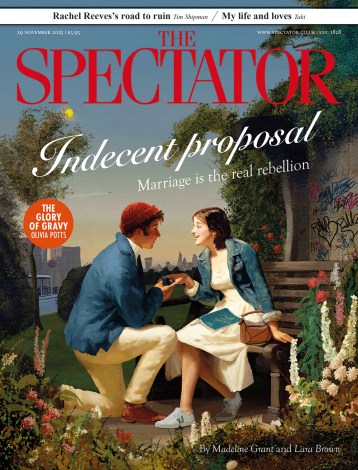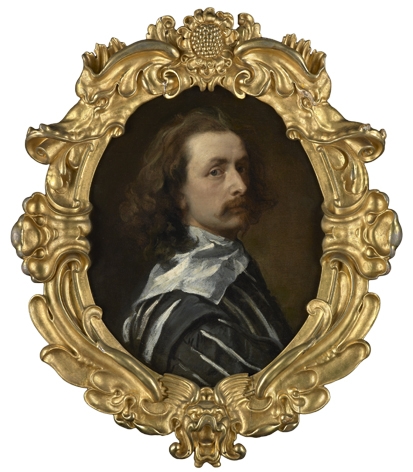Why should a portrait of a Flemish painter by a Flemish painter be considered so important to Britain that the culture minister Ed Vaizey has slapped a three-month export delay on it, and the National Portrait Gallery has announced a £12.5 million campaign to keep it in the country? Moreover, why is it so important that after reading this article you should immediately go to www.savevandyck.org and make a generous contribution to save it from going abroad? The answer lies in four words: Sir Anthony Van Dyck.
No other single artist has had such an impact on British art as Sir Anthony Van Dyck (1599–1641) not only in his own lifetime but also — as the 2009 Tate Britain’s exhibition demonstrated — right up to the 20th century. He was by far the most influential painter to have worked in Britain during the 17th century and must be seen as the launching point for so much of what happened artistically in subsequent generations. Van Dyck decisively turned British portraiture away from the stiff, formal, ‘iconic’ approach of Tudor and Jacobean painting, replacing it with that distinctive, fluid, shimmering, painterly style which was to dominate portraiture for nearly three centuries after his death. Making Britain his home from the beginning of his second visit in 1632 until his tragically early death in 1641, he painted the royal family and scores of other notable contemporaries. Flemish by birth, he was British by conviction; royalist by politics and patronage (he was knighted by Charles I), he was nonetheless utterly revolutionary as a painter. After him portraits weren’t just of people, they were about people.
This enigmatic self-portrait, his last, was painted in 1640–41, at the very end of Van Dyck’s life, and presents an intimate image of an artist at work. He shows himself actually in the act of painting, his hand raised in the process of applying paint to a canvas just out of sight. It conveys a sense of direct engagement with the artist as an individual, despite the passage of nearly four centuries. Although it once belonged to Sir Peter Lely, it’s been in the same family — the earls of Jersey — for three centuries, but has been sold to a foreign buyer and will go abroad unless the National Portrait Gallery (and you) can save it for the nation. It’s hanging there right now in St Martin’s Place in its original auricular, carved oak gilt frame, which adds to its outstanding importance because Van Dyck is likely to have designed it.
Van Dyck’s style was universally recognised and remarked upon not only by his contemporaries but also by his successors. The compositions that he introduced were to be appropriated by numerous British painters in subsequent centuries. Although he painted three self-portraits in his ‘British’ period, one is in poor condition and of lesser quality and the other is in the Prado in Madrid, and will therefore never come on to the market. This picture, by contrast, is outstanding in quality, in good condition and has an illustrious British provenance.
The painting presents a contrast between the broad, rapid, virtuoso handling of the costume and the exquisitely high level of finish in the face; the contrast underlines the intimate, private, reflexive and often experimental nature of self-portraiture of the period. In this period, self-portraits were usually produced as likenesses for close friends, or as a means of the artist making a personal artistic, emotional or social statement. The 17th century saw a gradual increase in this form of portraiture in Britain as artists began to be regarded — and to regard themselves — as important creative individuals. Van Dyck stands at the beginning of this change.
As viewers, we are watching Van Dyck in the very act of creating great art whose significance has resonated through the ages. The relative lack of finish in the artist’s costume draws attention to the act of painting that has produced this portrait. Viewed at a distance, the expensively dressed artist appears confidently in command, but when the work is seen close to there are signs of anxiety and even vulnerability evident around his eyes. The painting was one of the most popular and commented-on works in the Tate Britain exhibition, with visitors suggesting that it conveyed a powerful sense of Van Dyck ‘the man’.
Physical vulnerability was evident to Van Dyck at the time — he died a year or so after it was painted, after all — but so too was the political vulnerability of the whole royalist world in which he lived, worked and received his commissions. The Grand Remonstrance was being drafted, his patron Charles I was stumbling towards a civil war throughout 1641 that broke out soon after Van Dyck’s death. This portrait was therefore painted during the greatest crisis in British political history for centuries, which threatened to engulf everything Van Dyck knew. Secret signs of anxiety were only to be expected.
Of all the great British portrait painters, Van Dyck is by far the most important not to be represented by his own portrait in one of the great British public collections, considering how central he is to the history of the British school of painting and how his influence has grown over the centuries. ‘We are all going to Heaven,’ Gainsborough said on his deathbed, ‘and Van Dyck is of the company.’ For the National Portrait Gallery, the story of Britain that it attempts to tell through portraiture is simply incomplete without a portrait of Van Dyck, which has long been identified as one of the major lacunae in its otherwise superb collection.
This is the only chance a museum or a gallery in the United Kingdom has of acquiring the masterpiece, and it’s the only portrait of the artist ever likely to be made available for acquisition by a British public collection. Stephen Deuchar, Director of the Art Fund, has described it as ‘undoubtedly one of the finest and most important self-portraits in the history of British art’.
What kind of a people are we if we allow this picture to be lost to Britain? Hit that website!






Comments